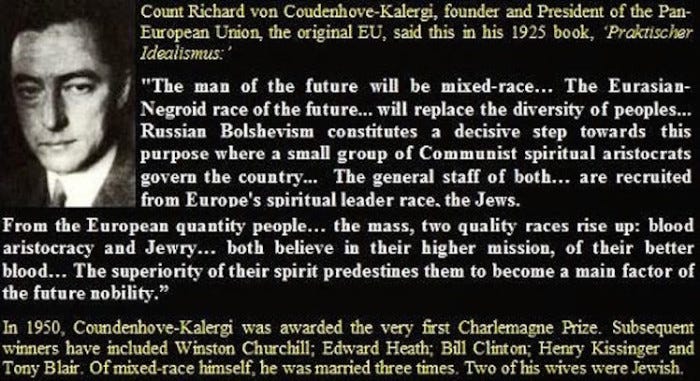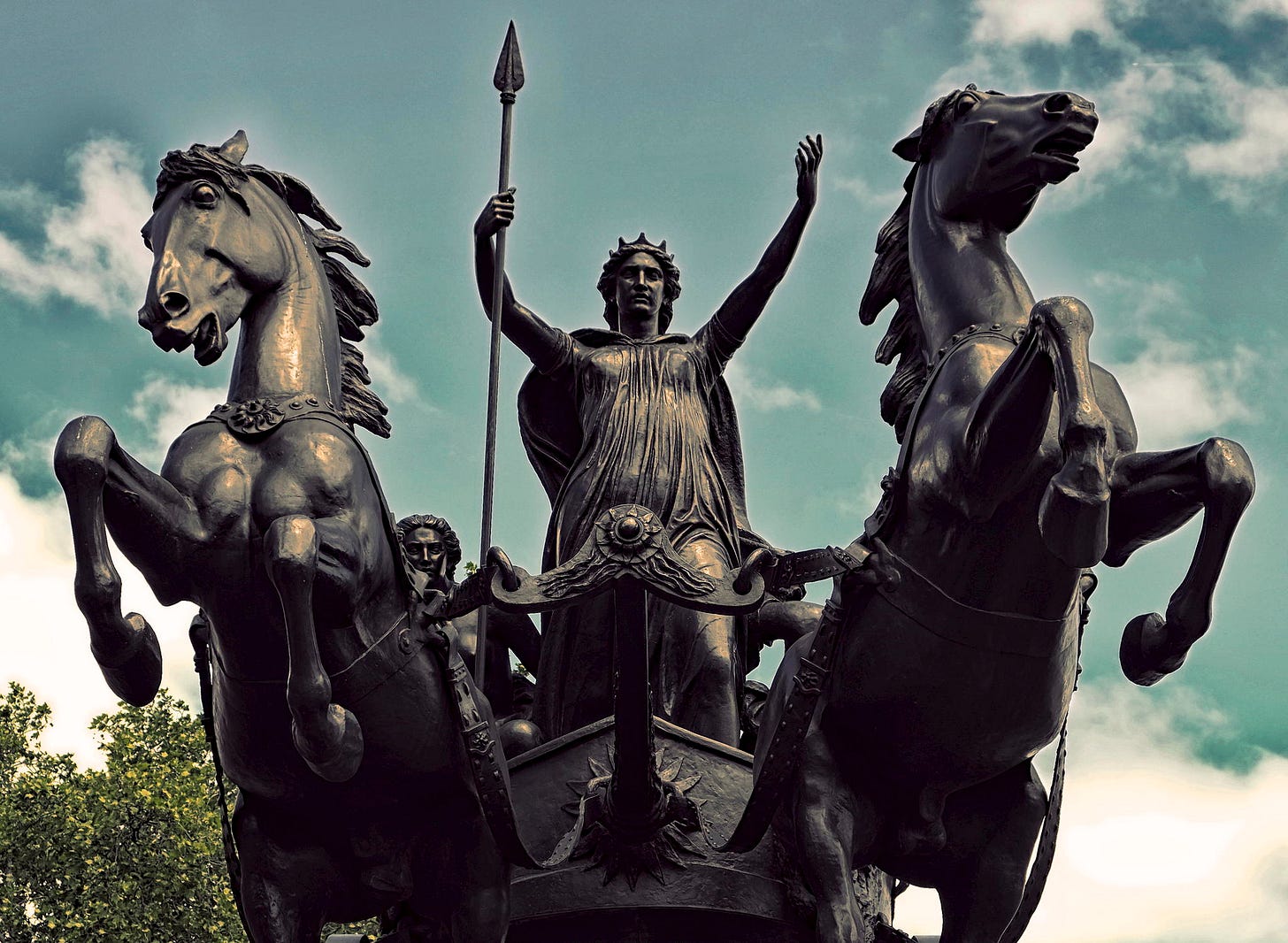EXPOSING ROMAN EMPIRE 2.0
Did Rome ever fall? Not really! It is out of sight but not out of power!
In the days before reading and writing were common, symbols conveyed ideas.
The killing of the bull is symbolic of murdering nature, dominating nature and, let's face it, that is precisely what the Roman Empire, the Venetian Black Nobility and now the Crown Corporation are all about.
The Mithras museum, created as part of the new Bloomberg HQ in London, is dedicated to preserving a Temple of Mithras buried deep underground, which gives you a bold clue about what the Crown Corporation and its minions, like Michael Bloomberg, are intending to do with their gluttonous and sickening power.
Entrance to this religious dungeon is free of charge and by appointment only.
Remember nothing is ever truly free.
The expense of this extravagant work has been borne by the Bloomberg fortune for a very good reason.
https://en.wikipedia.org/wiki/Michael_Bloomberg
The owners see themselves as members of the future overseers of a grim and horrific control network, aptly symbolised by the deification of Mithras in the modern world.
https://londontopia.net/culture/museums/the-temple-of-mithras-londons-new-roman-museum-in-the-new-bloomberg-london-hq/

THE ORIGINS OF ROMAN EMPIRE 2.0
In his book, The Venetian Conspiracy, Webster Tarpley writes:
In the Middle Ages the Venetians were known as the archetypes of the parasite, the people who “neither sow nor reap.” For the Greeks, they were the hated “frogs of the marshes.” In Germany, a folk tale describes the merchant of Venice as an aged Pantaloon who makes his rounds robbing men of their human hearts and leaving a cold stone in their place.
Closer to the essence of Venice is the city’s symbol, the winged lion of St. Mark, bearing the misleading inscription, Pax Tibi Marce, Evangelista Meus (“Peace be with you Mark, my evangelist.”) The chimerical winged lion comes out of the East, either from Persia or from China. The symbol is thus blatantly pagan, with St. Mark being added as an afterthought because of his alleged visit to the Venetian lagoons. To buttress the story, the Venetians stole St. Mark’s body from Alexandria in Egypt, and Tintoretto has a painting celebrating this feat.
The point is that Venice looks East, toward the Levant, Asia Minor, central Asia, and the Far East, toward its allies among the Asian and especially Chinese oligarchies which were its partners in trade and war. This is reflected in a whole range of weird, semi-oriental features of Venetian life, most notably the secluded, oriental status of women, with Doges like Mocenigo proudly exhibiting a personal harem well into modern times.
Venice today sits close to the line from Lubeck to Trieste, the demarcation between NATO and Warsaw Pact Europe, roughly corresponding to the boundary between Turks in the East and Christians in the West, and still earlier between the Holy Roman and Byzantine Empires. Into this part of the northern Adriatic flow the rivers of the southern side of the Dolomites and the Julian Alps. The greatest of these is the Po. These rivers, around 300 A.D., made the northern Adriatic a continuous belt of marshes and lagoons about fifteen kilometres wide, and extending from the city of Ravenna around to the base of the Istrian Peninsula, where the Italian- Yugoslavian border lies today.
In the centre of this system was Aquileia, starting point of an important north-south trade route across the Brenner Pass to the Danube Valley and Bohemia. Aquileia was the seat of a patriarch of the Christian Church, but its tradition was overwhelmingly pagan, and typified by rituals of the Ancient Egyptian Isis cult. For a time after the year 404, Ravenna and not Rome was the capital of the Roman Empire in the West. After the extinction of the western empire, Ravenna was the seat of government of Theodoric the Ostrogoth, the court visited by Boethius. Later Ravenna was the capital of a part of Italy ruled by the Byzantines.
The islands of the lagoons provided an invulnerable refuge, comparable to Switzerland during World War II, for Roman aristocrats and others fleeing the paths of Goth, Hun, and Langobard armies. Already between 300 and 400 A.D. there are traces of families whose names will later become infamous: Candiano, Faliero, Dandolo. Legend has it that the big influx of refugees came during the raids of Attila the Hun in 452 A.D. Various areas of the lagoons were colonized, including the present site of Torcello, before the seat of administration was fixed at a group of islands known as Rivus Altus (“the highest bank”), later the Rialto, the present location of the city of Venice. The official Ab Urbe Condita is March 25, 721 A.D. Paoluccio Anafesto, the first ruler of the lagoon communities, called the doge (the Venetian equivalent of Latin dux or Florentine duca/duce, meaning leader or duke), is said to have been elected in the year 697.
The most significant fact of this entire period is that the whelp of what was later to become Venice survived and grew thanks to its close alliance with the evil Emperor Justinian in Constantinople, an alliance that was underlined in later years by intermarriage of doge and other leading Venetian oligarchs with the nobility of Byzantium, where a faction embodying the sinister traditions of the Roman Senate lived on for a thousand years after the fall of Rome in 476.
Venetian families are divided into two categories. First come the oldest families, or Longhi, who can claim to prove their nobility substantially before the year 1000. The Longhi include many names that are sadly familiar to the student of European history: Dandolo, Michiel, Morosini, Contarini, Giustinian (perhaps related to the just- mentioned Byzantine emperor), Zeno, Corner (or Cornaro), Gradenigo, Tiepolo, and Falier. These old families held a monopoly of the dogeship until 1382, at which time they were forced to admit the parvenu newcomers, or Curti, to the highest honor of the state. After this time new families like Mocenigo, Foscari, Malipiero, Vendramin, Loredano, Gritti, Dona, and Trevisan came into the ascendancy.
These families and the state they built grew rich through their parasitizing of trade, especially East-West trade, which came to flow overwhelmingly through the Rialto markets. But there is a deeper reality, one which even derogatory stories about spice merchants are designed to mask. The primary basis for Venetian opulence was slavery. This slavery was practiced as a matter of course against Saracens, Mongols, Turks, and other non-Christians. In addition, it is conclusively documented that it was a matter of standard Venetian practice to sell Christians into slavery. This included Italians and Greeks, who were most highly valued as galley slaves. It included Germans and Russians, the latter being shipped in from Tana, the Venetian outpost at the mouth of the Don, in the farthest corner of the Sea of Azov. At a later time, black Africans were added to the list and rapidly became a fad among the nobility of the republic.
Venice was the centre of efforts to destroy the advanced European civilization of the 11th and 12th centuries and bears a burden of guilt for the ascendancy of the Black Nobility Guelphs and the black plague.
Napoleon forced the end of this vile organism during his Italian campaign of 1797, but the cancer had already infected Geneva, Amsterdam, London and elsewhere.
Though the sovereignty of Venice had been extinguished, its methods lived on to the 20th century.
We know it as #Fascism.
Venice is today, through its Cini Foundation and its Societé Europeenne de Culture, the Club Of Rome think tank. Venice is the supranational homeland of the New Dark Ages gang, the unifying symbol for the Utopian lunatic fringe in the international intelligence community today.
How did Venice become so hidden and yet powerful?
Between 300 and 400 AD the Roman aristocrats who later became infamous: Candiano, Faliero, Dandolo found the islands of Venice lagoons provided an invulnerable refuge when they fled the Goth, Hun and Langobard armies.
The main influx of displaced Roman senators came during the raids of Attila the Hun in 452 AD.
Venice survived thanks to their alliance with Emperor Justinian in Constantinople, an alliance underlined by intermarriage of Venetian oligarchs with the nobility of Byzantium.
Thus, a faction embodying the traditions of the Roman Senate continued beyond the fall of Rome in 476.
The basis of Venetian opulence was slavery, practiced against Saracens, Mongols, Turks and Christians.
This included Italians and Greeks, who were most highly valued as galley slaves. Germans and Russians were shipped in from Tana.
Later, black Africans became popular among the nobility.
Islands like Crete, Cyprus, Corfu, Naxos and smaller holdings in the Aegean were worked by slave labour, directly under the Venetian regime.
In later centuries, the harems of the entire Ottoman Empire, from the Balkans to Morocco, were stocked by Venetian procured slaves.
Venice became the leading port of the Mediterranean.
Indistinguishable from slave operations were piracy and buccaneering, other staples of the Venetian economy.
Wars with Genoa or others were opportunities to loot. Piracy was routine commerce during decades of treachery and mayhem.
Venetian production from the earliest period was essentially nil, apart from salt and the glass manufacture of Murano. The role of the Venetian merchant was as a profiteer who conned both buyer and seller, backing up his monopolisation with war galleys of the battle fleet.
Venice remained impervious to invasion from the first settlement until 1797.
In the typology of Plato’s Republic, Venice was an oligarchy, “a constitution according to property, in which the rich govern and the poor man has no share” or “rule of the few, a constitution of evils”.
By 1297 all male members of the 150 noble families had the permanent right to a seat in the Gran Consiglio, or Great Council, which grew to 2000 members around 1500 and thereafter slowly declined.
They kept ambassadors in all national courts, war ministers and naval officers.
Dante visited Venice in 1321. He died shortly after leaving, in fear for his life. He had been forced to follow a path through the swamps which caused him to sicken with malaria. A boat may have been available, but to board it meant certain assassination!
Venetian records of the event have conveniently disappeared.
What was the Venetian political method?
The apparently ‘weaker’ power plays off two or more major empires against each other.
First the Langobard Kingdom of Italy was played against the Byzantines. Then they attempted to play the Byzantines off against the Carolingian Empire in the West, which almost misfired.
In the 11th century, the Venetians successfully incited Norman barons, operating out of Sicily under Robert Guiscard, to attack Byzantium and then moved in to offer the desperate Byzantines protection. The price for that protection was mentioned in the famous Golden Bull of 1082.
It was a decree of the Byzantine Emperor by which Venice acquired customs-free access to the eastern empire, where the Greeks themselves had to pay a tax of 10% on their transactions. Thus began a hatred for Venice among the Greek population which persists to the present day.
In the 16th century, Venetian strategy was to play the Ottoman Turks against the Spanish and Austrian Hapsburgs and then to play the Hapsburgs off against the French!
Venice played the Portuguese off against the Dutch and the Dutch against the English, the English against the French!
The Venetians also goaded forces of the East to attack Christendom. Venice was the manipulator of Saracens, Mongols and Turks.
In particular, the Venetians were more willing to see territory (except Venetian territory) occupied by Turks than any other power.
Venice was repeatedly confronted by a triumphant enemy who had to be manipulated to self-destruct, not in any old way, but in a precise and specific way that served the Venetian interests.
Does this sound impossible?
What is astounding is how often it has succeeded and still does!
Effectively, they used their enemies as mercenaries by ensnaring them in debt and offering to cancel the debt if they fought for Venice!
From 1203 to 1204, Constantinople was besieged by the joint Franco-Venetian force and Byzantium was sacked in an orgy of violence and destruction.
Venice took over part of Constantinople, created a permanent Venetian colony with its own battle fleet. Lemnos, Gallipoli, Crete, Naxos, related islands and the large island of Euboa were annexed.
On the Ionian side, the Venetians snatched Modon, Koron and several islands including Corfu.
The loot from Constantinople was greater than anything Europe saw until the Spanish fleets from the Americas centuries later!
Venice acquired an empire of naval bases in the eastern Mediterranean and the sultan of Egypt bribed them to keep the Crusaders out of Palestine!
Bonus!
Another factor was the Mongol hordes. The Venetians were spies for Genghis Khan guiding them to sack Baghdad.
At the time the Venetians were sacking Constantinople, Genghis Khan ruled over an empire from Korea to Iran and which was advancing West. Batu, a nephew of Genghis, defeated the Bulgarians in 1236, captured Ukraine in 1240 & swept into Poland.
The Mongols did not go in like reckless barbarians. They advanced according to a careful plan. At every stage, the Mongols were informed by Venetian merchants, like Marco Polo’s father.
Later, Polo himself was welcomed at the court of Kublai Khan and became an administrator to the Khan.
So the great Marco Polo and the Venetian family from which he came, was responsible for directing Genghis Khan into war against Europe. The omnipresent Venetian intelligence was also a factor in the Mongol destruction of the Arab cultural centre of Baghdad in 1258.
Shakespeare’s play “Othello, The Moor of Venice” is an analysis of the Venetian technique.
It was written and performed shortly after 1603, when the Venetians and Genoese had acquired power in England through the accession of their puppet James I to the throne.
In the play, Othello is hired out to Venice as a mercenary at the apex of his power having just won a victory over the Turkish fleet attacking Cyprus.
He enjoys the full confidence of the Senate and has just married Desdemona, the daughter of a patrician.
Othello, the moor barbarian, is something of a dumb giant! His proficiency in war is unmatched, but his emotions tend decidedly toward the naive and infantile. He has no insight into affairs of state or psychology.
Above all, he is superstitious and is inclined to be jealous.
These weaknesses are exploited by Iago, a member of Othello’s staff who intends to destroy him.
Iago is like a Venetian intelligence officer, an expert manipulator:
"Make the Moor thank me, love me and reward me for making him an ass and practicing upon his peace even to madness."
He sets up a fight that leads to a wounding.
After this, he manipulates Desdemona’s naive desire to help a friend into prima facie evidence that Desdemona is an adulteress. Iago is then able to goad Othello all the way to killing Desdemona and finally, himself.
So we can see that Shakespeare and presumably his audience were familiar with the style and cruelty of Venetian geo-politics.
Foundation of a new Roman Empire
The real danger for Venice by 1600 was a hostile power that developed defences against manipulation and deceit.
In the face of such, Venice did, and does kill.
The foundation of a new Roman Empire became, in Venice, from the middle of the 15th century on, the leading obsession of the oligarchs.
Much Venetian energy was devoted to a rapid expansion up the Po Valley toward Milan but they were stymied for 40 years by the Medici.
Machiavelli noted that the two most dangerous forces in Italy around the turn of that century were the Venetians and the Pope. His hatred was directed especially against Venice for wanting to subjugate Italy in a new Roman Empire. He despised Venice for its armies of mercenaries.
All Europe turned against Venice.
Machiavelli exulted when the Venetians lost everything they had conquered over the preceding 800 years.
With nothing left but the lagoons, the Venetian position was desperate due to their reputation for arrogance, violation of promises, lechery and sodomy.
The Italian Renaissance during the rest of the 16th century was only one event of several in Europe.
Another was the Protestant Reformation.
Luther’s real clout was publicity that owed much to the Venetian publishing presses turning out 40,000 copies of his "heretical" writings.
Playing both sides of the religious argument against each other the Venetians supported Ignatius Loyola from abject poverty, to Jerusalem and back, until he established the Jesuits who were to become a military force, dedicated to serve the Pope and crush Protestantism.
The Venetians sat back & watched the fireworks.
Around 1570 Venice had the first example in Europe of a “salon” for socialising and literary discussion: the Ridotto Morosini, sponsored by the ancient family of the same name. Here the seeds were sown that would later produce free-thinking, l’esprit libertin and the Philosophes.
The Venetians initiated the Enlightenment.
The Ridotto Morosini salon was in favour of tolerance and science, against everything doctrinaire and narrow. They sheltered Galileo against the Inquisition. Out of the Morosini salon came a rare public faction in Venetian history, the Giovani i.e., the youth.
The Giovani wanted profound innovations in Venetian foreign policy. They wished to cement alliances with the countries to whom they felt the future belonged: France, England and the Netherlands.
The main supporter of Venice internationally was James I, the Stuart ruler of England and Scotland.
In 1603, Venice and Genoa teamed up, created a banking dynasty and assumed direction of the finances of Stuart England imparting their characteristic ruthless methods to the British East India Company.
The financial centre of old Venice was on the move north.
They created the Amsterdam Bank, the financial hinge of the 17th century and the Dutch East India Company.
Venice and Genoa were also the midwives for the great financial power growing up in Geneva, which controlled the French public debt and they continued to foster the Enlightenment.
The Venetians began a major move into maritime and other types of insurance. These ventures live on today in the biggest business enterprise associated with Venice, the Assicurazioni Generali Venezia, one of the biggest insurance and real estate holdings in the world.
On May 12, 1797 the Gran Consiglio of Venice obeyed Napoleon’s ultimatum and voted itself out of existence.
4,000 French infantrymen paraded where foreign troops had never before in history been seen.
The Venetian “Republic” was gone, but it now existed in a more clandestine form.
3,000 Venetian naval personnel, about 1/3rd of their available strength, were serving the British Royal Navy just as the American Revolution began.
During the 19th century and onwards, with its military and financial power hidden, Venice’s political power grew greater than ever.
Count Coudenhove-Kalergi, founder of the Pan-European Union, lived in Venice and Nietzsche visited.
Thomas Malthus plagiarised a Venetian when he wrote his Essay on Population.
Plans for destroying the Ottoman and Russian empires, (i.e., WW1) were made by Venice spook Alexander Parvus.
Today, the Club of Rome is the influence that represents the essence of Venetian methods. The Club of Rome convinces people to commit collective suicide by accepting the genocidal doctrine of zero growth. It seeks to abolish sovereign nations and create a totalitarian global state. Perhaps the most daring of plans by the Club of Rome is to financialise nature itself.
Climate Change is its most spectacular propaganda.
Truly, the most urgent task of this generation is to definitively liquidate the manipulative horror that is Venice and its oligarchic hierarchy.
Recommended reading:
How the Venetian System Was Transplanted Into England
by Webster G. Tarpley, Ph.D.
New Federalist, June 3, 1996
http://tarpley.net/online-books/against-oligarchy/how-the-venetian-system-was-transplanted-into-england/
Also: THE EUROPEAN BLACK NOBILITY https://exposingpedovore.wordpress.com/2019/03/03/the-european-black-nobility-2/comment-page-1/
More: WHO ARE THE INTER ALPHA GROUP?
https://larouchepub.com/eiw/public/2010/eirv37n36-20100917/eirv37n36-20100917_024-the_inter_alpha_group_nation_kil.pdf
Happy hunting!
Says the ghost of Queen Boudica of the British Iceni who tried to drive Rome out of Britain in 60AD.
If you appreciate my research but cannot commit to a paid subscription you could buy me a coffee at: https://www.buymeacoffee.com/FrancesLeader
Please note that all my work is entirely free to read and will never be hidden behind a paywall. My lovely paying subscribers contribute knowing this to be true and I would like to take this opportunity to thank them very much for their ongoing support.
The important thing is sharing this educational information on social media, especially on X and Facebook and Discord where I am permanently excluded because my work upsets the totalitarians.























The real global rulers are a syndicate of criminals. None of them live in the Vatican, nor the City of London nor Washington DC.
They live on superyachts, Caribbean Islands and in fortified European castles. They are never gathered together in one place, apart from on Zoom or Skype.
They have to be found, detained and incarcerated in high security mental institutions because they are psychopaths. No court will convict them so we have to avoid legalities. Their assets have to be confiscated and returned to the public purse.
Only then we will have any semblance of justice.
https://francesleader.substack.com/p/black-nobility-101
A quick look at the Temple to Mithras in London
https://www.youtube.com/shorts/alwlE04ZOyA